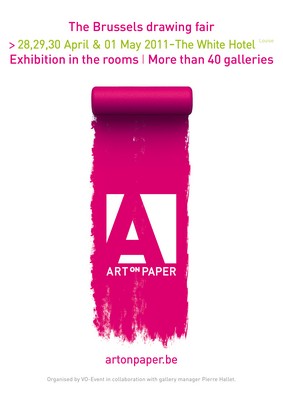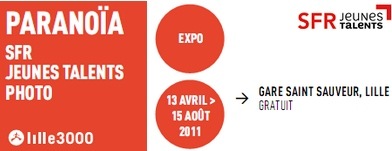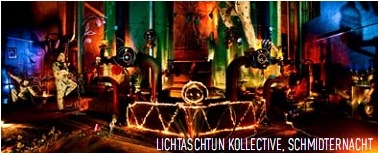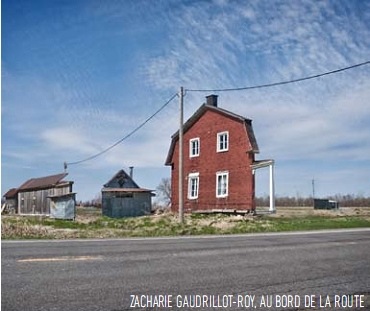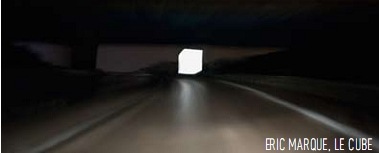Conrad Marca-Relli
City to Town
Knoedler & Company, New York
May 5 - July 29, 2011
Conrad Marca-Relli
The Springs Years, 1953-1956
Pollock-Krasner House and Study Center, East Hampton
May 5 - July 30, 2011
In assocation with Archivio Marca-Relli, Parma
CONRAD MARCA-RELLI
Cityscape, ca. 1952, Oil on canvas, 36 1/2 x 61 1/2 inches
Courtesy Knoedler & Company, NYC and Archivio Marca-Relli, Parma
A wonderful, mysterious city has been discovered by Marca-Relli. Its exact location is never revealed, yet clues place it somewhere between Hopper’s New York and de Chirico’s dream city. — Paul Brach, 1953
CONRAD MARCA-RELLI’s life and career were restlessly peripatetic—he moved back and forth between Europe and the United States, with homes at various times in New York City, East Hampton, Rome, Paris, Ibiza, and Parma—even for a time living on a houseboat on the Seine. In addition, his frequent travels included two trips to Mexico (in 1940 and 1952), where the geometric abstract quality of the white adobe architecture, seen in intensely contrasting light and shadow, proved extremely influential on his cityscapes, as well as his evolving work in collage.
As a condition of duality characterized his pattern of residency throughout his life, so too, in his art, Marca-Relli kept a foothold both in abstraction and figuration. He never gave himself over entirely to pure abstraction, but found he was either inclined to abstract a figurative reference or to travel back and forth in his work between figuration and total abstraction. In his catalogue essay, Senso Architettonico, Carter Ratcliff identifies the “architecture” of art-making as a unifying and core principle in Marca-Relli’s work, one which led him ultimately away from painting per se, to the “construction” of collages. As early as 1951, in an ongoing series of town- and cityscapes, the artist began exploring a theme that brought together his attention to structure in his work; his literal engagement with architecture; his response to the history and specificity of the locales he visited; and the metaphorical underpinning the theme allowed for. Metaphorical depictions of towns and cities recur throughout Western art history—from Ambrogio Lorenzetti’s 14th century allegorical murals in the Palazzo Pubblico, Siena, to the urban world of Edward Hopper, to the metaphysical cityscapes of Mario Sironi and Giorgio de Chirico. Indeed Marca-Relli’s stacked dwellings and perforated façades, as well as his desolate, depopulated views, have much in common with these artists. Carter Ratcliff has written:
Seen in isolation the Cityscapes of 1951–52 are astonishing. Rendered in a palette of grays at once gloomy and luminous, they are filled with a melancholy that is not mere sadness but, rather, an exalted awareness of the humanity we have shared in the cities we began to build more than five millennia ago. Charging ordinary buildings with the weight of history, these paintings are all the more remarkable when we see them against the backdrop of the New York art world in the early 1950s.
Despite the dominance of Abstract Expressionism in postwar American art, Marca-Relli’s cityscapes had relevance and resonance for his contemporaries. In 1976, Harold Rosenberg recalled of Marca-Relli that the first strong impression made on me by his canvases was a show of his “cityscapes.” The U.S. Pavilion at the 1956 Venice Biennale was an exhibition entitled, American Artists Paint the City, curated by Katharine Kuh of The Art Institute of Chicago. Included was Marca-Relli’s 1951 New York cityscape, La Città. The series continued to evolve in Marca-Relli’s work, and we find him passing through widely diverging treatments and variations on the subject through the late 1990s.
CONRAD MARCA-RELLI: CITY TO TOWN, spans the years 1942 to 1996, and includes over twenty paintings and collages. The exhibition remains on view at Knoedler & Company through July 29. The opening reception will be held on Thursday, May 5, from 5:30 to 7:30 pm.
Concurrently on view at the Pollock-Krasner House and Study Center, East Hampton is CONRAD MARCA-RELLI: THE SPRINGS YEARS, 1953-1956, May 5-July 30. This exhibition focuses on works created during the period of Marca-Relli’s four-year residence in East Hampton, at 852 Fireplace Road, which was also the period of his warm and respectful friendship with his neighbors, Jackson Pollock and Lee Krasner. Marca- Relli later wrote, I felt that moving away from the city would give me the peace necessary to pursue my work. The move had a favorable, even decisive influence on his art, as it had for Jackson Pollock, who moved to Springs in 1945. In Marca-Relli’s case, this period saw the full emergence of his engagement with collage; indeed, in his catalogue essay, Carter Ratcliff sees the artist as redefining the premises of collage, literally reinventing it. A reception will be held at the Pollock-Krasner House and Study Center on Sunday, June 26, from 5:00 to 7:00 pm, with a gallery talk by Magdalena Dabrowski, Special Consultant in the Metropolitan Museum of Art’s Department of Nineteenth-Century, Modern and Contemporary Art.
The exhibitions, both organized in cooperation with the Archivio Marca-Relli, Parma, Italy, are accompanied by a dual publication with essays by Carter Ratcliff.
CARTER RATCLIFF is a poet and art critic. A contributing editor of Art in America, he has received several awards for his work, including the College Art Association’s 1987 Frank Jewett Mather Award for Art Criticism, a Guggenheim Fellowship, two National Endowment for the Arts’ Art Critics Grants, and a Poets Foundation Grant. His writings have appeared in American and European journals and in the publications of museums including the Museum of Modern Art in New York, the Guggenheim in New York, and the Royal Academy in London. He has taught at the School of Visual Arts and Hunter College and has lectured at a variety of institutions, including the Whitney Museum of American Art and the San Francisco Museum of Modern Art. Among his books are monographs on Andy Warhol, John Singer Sargent, and Georgia O’Keeffe. He is the author of The Fate of a Gesture: Jackson Pollock and Postwar American Art, The Figure of the Artist (2000), and Out of the Box: The Reinvention of Art: 1965-1975 (2000).
The upcoming exhibition in the Knoedler Project Space will be KEITH MAYERSON: Iconscapes, 1995-1999, May 12 - July 29, 2011
KNOEDLER & COMPANY
19 East 70th Street
New York, NY 10021


